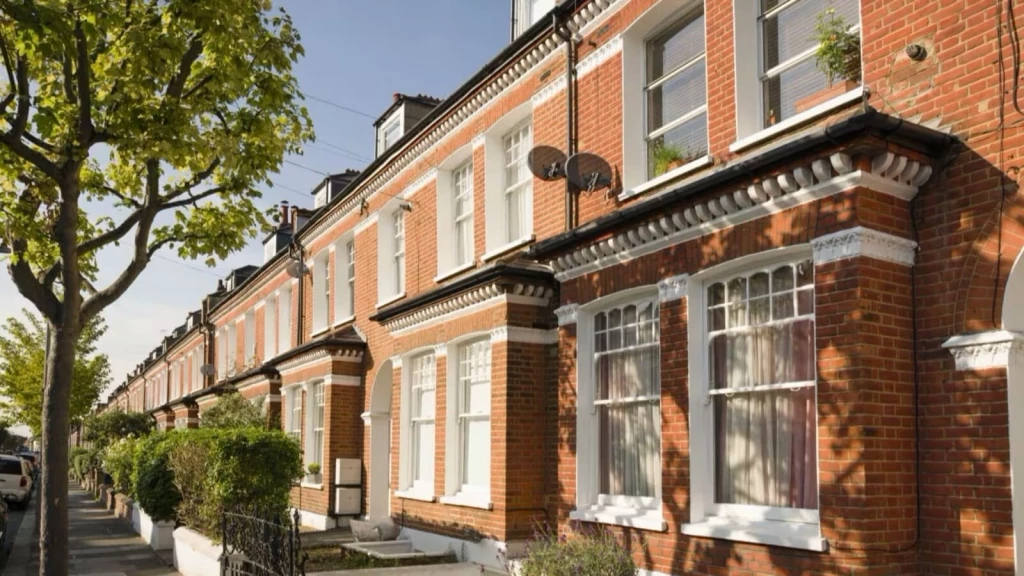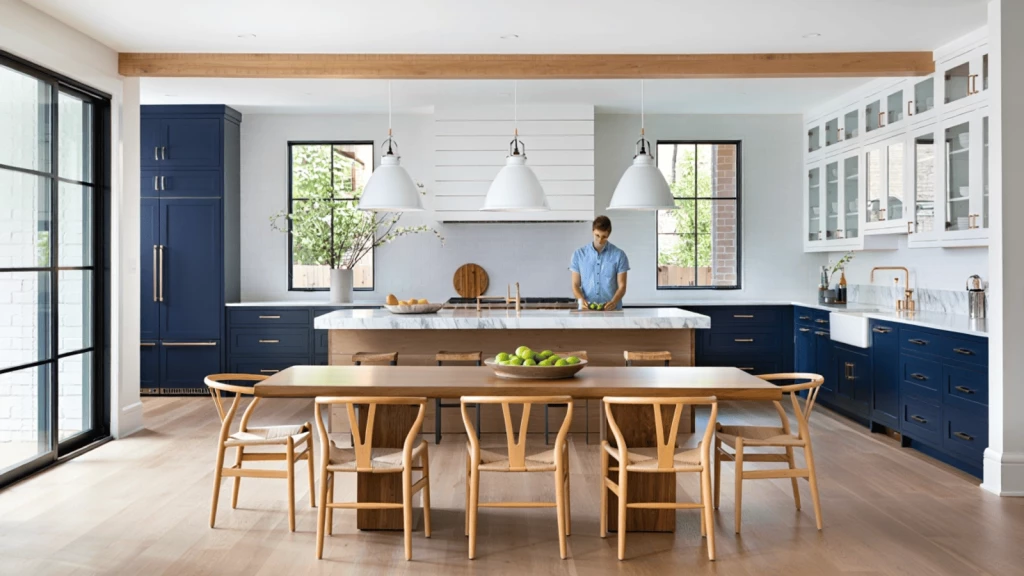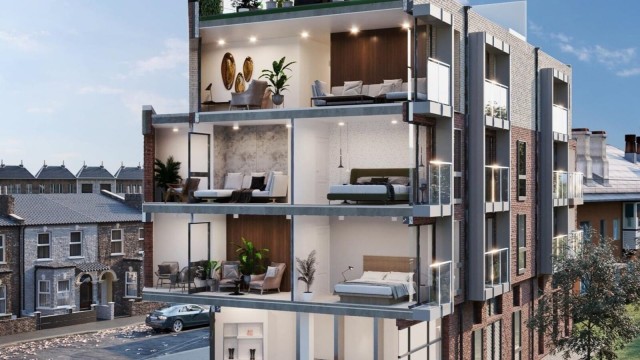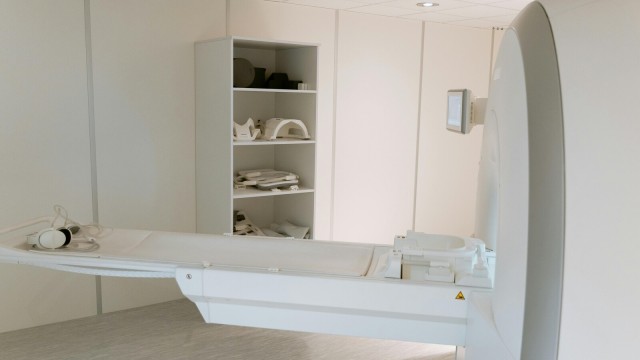Read next
The latest news, updates and expert views for ambitious, high-achieving and purpose-driven homeowners and property entrepreneurs.


Picture this: a single terraced house generating double, sometimes triple, the rental income of a conventional let.
This isn't property investment fantasy; it's the reality of a well-executed HMO (house in multiple occupation) – an investment model that savvy landlords across Britain have been quietly capitalising on for years.
With rental demand soaring across the country and tenants increasingly seeking affordable yet comfortable accommodation, HMOs have emerged as the golden ticket in property investment.
But the path from standard dwelling to profitable HMO is strewn with regulatory hurdles and design considerations that can make or break your venture.
In this guide, you'll discover not only why HMOs outperform traditional investments, but also how to transform your property into a high-yield rental asset without becoming enslaved to its management.
From clever spatial design that maximises both comfort and returns, to navigating the labyrinth of compliance requirements with ease, we've distilled years of expertise into actionable intelligence.

A house in multiple occupation (HMO) is a rental property where three or more unrelated people share essential facilities such as a kitchen, bathroom, or living area.
Unlike a standard buy-to-let, which is typically let under a single tenancy agreement to one household, an HMO is usually rented out on a room-by-room basis. This structure allows landlords to significantly increase their rental yield by collecting multiple income streams from a single property.
It’s important to distinguish HMOs from similar housing models such as purpose-built student housing and co-living spaces. While these may also involve shared amenities and multiple tenants under one roof, they are typically designed and managed in very different ways.
Purpose-built student housing refers to large-scale developments specifically tailored to student lifestyles, typically offering ensuite rooms and on-site facilities like gyms, laundry rooms, and study areas.
Co-living spaces, on the other hand, are an emerging trend aimed at young professionals, offering fully furnished rooms, hotel-style services, and flexible contracts, usually within modern, high-density buildings. Though not classified as traditional HMOs, these models reflect the same growing demand for affordable, communal living in urban areas.
Not all HMOs are created equal and from a legal and planning perspective, size matters.
A small HMO typically houses three to six unrelated people sharing facilities. In planning terms, this falls under Use Class C4, and in many areas outside of Article 4 zones, converting a family home into a small HMO may not require full planning permission thanks to permitted development rights.
That said, applying for a certificate of lawfulness is strongly advised to confirm the change of use is lawful and to protect against future enforcement issues — especially in areas where local policies can shift.
A large HMO, by contrast, refers to any shared house with seven or more occupants, and is classed as sui generis — meaning it falls outside of the common use class categories.
Converting a property into a large HMO always requires planning permission, and usually involves stricter scrutiny around design, layout, and impact on the local area.
Beyond planning, the differences run deeper.
Large HMOs often need more robust fire safety systems, additional bathrooms or kitchens, and enhanced amenity space to comply with licensing conditions. But with higher room counts comes the potential for significantly greater rental income — if designed and managed well.

HMOs are not only a profitable investment opportunity for landlords, but they also serve a critical role in the UK rental market by providing flexible, affordable housing solutions for a wide range of tenants.
With astronomical rental prices making traditional one-bedroom flats unaffordable for many, HMOs offer a cost-effective alternative where tenants can rent a private room while sharing communal facilities such as kitchens, living areas, and bathrooms.
This setup particularly benefits young professionals, students, and low-income renters who may not be able to afford self-contained flats but still seek high-quality accommodation.
So who exactly are HMOs for?
For councils and the wider housing system, HMOs also ease pressure on social housing and reduce the strain on family-sized properties by offering a more efficient use of space in high-demand areas.
And for tenants, there’s another hidden benefit: regulation. Over the past decade — and especially post-2020 — local authorities have tightened HMO licensing requirements. This has driven up standards across the sector, meaning today’s well-run HMOs are often safer, cleaner, and better maintained than many conventional rentals.
In short, HMOs fill a critical gap between affordability and quality, giving tenants flexibility and landlords a way to future-proof their investments in a shifting rental market.
From a pure investment perspective, HMOs often leave standard buy-to-lets in the dust, particularly when it comes to rental yield.
Because HMOs generate income per room rather than per property, landlords can tap into multiple revenue streams from a single asset. According to data from property investment platform Lendlord, the average annual rental income for HMOs in Greater London reached £40,169 in Q4 2024.
By contrast, Rightmove’s Rental Trends Tracker reported an average of £32,340 for traditional rental properties over the same period.
Let’s put this into context using a real London location:
A typical three-bedroom house in SW17 (Tooting) let to a single family typically brings in around £2,500 per month.
However, if the same property is let as a small HMO, with each room rented individually at a conservative £1,100 per month, the income jumps to £3,300 per month — without any physical extension.
Now consider adding a rear and loft extension to create three additional bedrooms. At the same rate of £1,100 per room, you’re looking at £6,600 per month in gross rent — more than 2.5 times the income from a standard family let.
And here’s the kicker: even if one room is vacant, your income doesn’t disappear. With rent diversified across multiple tenancies, HMOs offer a level of risk resilience that single-lets simply can’t match.
With demand for affordable, high-spec shared housing only growing — particularly among young professionals in London — HMOs are proving to be not just more profitable, but far more resilient in the face of market shifts.

Converting a home into an HMO is not just about finding a big enough house, it’s about choosing a property that’s adaptable, financially viable, and likely to meet planning and licensing requirements. Below, we’ve broken down what makes a great candidate for conversion and how to carry out the right checks before taking the plunge.
Some homes lend themselves naturally to HMO layouts while others will cost far more than they return.
To avoid costly design compromises or compliance challenges later, here’s what to prioritise when searching for an HMO project:
Once you’ve found a promising property, your next step is due diligence, ensuring the project is actually viable before committing funds or submitting plans. Here’s what you need to confirm:

Before you rush into converting a property into an HMO, there’s one crucial thing to get right from the outset: HMO planning permission.
In many parts of England, converting a single-family home (Use Class C3) into a small HMO (Use Class C4) - that is, for three to six unrelated occupants - falls under permitted development rights. This means you don’t need to submit a full planning application.
However, that only applies where no Article 4 Direction is in place.
An Article 4 Direction is a tool used by local councils to remove permitted development rights in specific areas. In places like much of London, Manchester, Birmingham, and other high-demand cities, these restrictions are widespread and growing.
If your property falls within an Article 4 area, you must apply for full planning permission even for a small HMO conversion. Failing to do so can lead to enforcement action, fines, or refusal of an HMO licence later down the line.
Submitting a planning application for an HMO is about demonstrating that your proposal will contribute positively to the local housing mix, avoid negative impacts on neighbours, and meet minimum living standards.
Here’s what planning officers and committees typically assess when reviewing an HMO proposal:
By anticipating these concerns and addressing them proactively in your application, ideally with the support of an experienced architect or planning consultant, you dramatically increase your chances of approval. A well-prepared HMO proposal is about showing you understand how to integrate your property into the wider community responsibly.
That said, not every decision goes your way and councils don’t always get it right.
In some cases, refusals are based on inconsistent interpretation of policy, overly cautious assumptions about impact, or even local political pressure. If your application is refused despite meeting planning policy and standards, you have the right to appeal to the Planning Inspectorate. Many appeals for HMO conversions have been allowed where the council’s reasoning didn’t hold up under scrutiny.

If you're renting a property to multiple unrelated tenants who share facilities, chances are you’ll need an HMO licence and failing to get one can have serious legal and financial consequences.
Under the Housing Act 2004, mandatory HMO licensing applies when a property is occupied by five or more people forming two or more households, regardless of the number of floors. This includes single-storey flats or bungalows - if five unrelated adults live there and share a kitchen or bathroom, it’s a licensable HMO.
In addition, many local authorities operate additional licensing schemes that cover smaller HMOs — typically properties with three or four tenants forming more than one household. These rules vary by borough, so it’s essential to check with your local council to understand whether your property falls under their licensing requirements.
Managing an HMO without the correct licence is not just a technical oversight, it’s a criminal offence. And the penalties for getting it wrong are no longer a slap on the wrist - they can be financially and reputationally devastating.
Courts now have the power to impose unlimited fines on landlords operating unlicensed HMOs. That’s right, the old £20,000 cap is long gone. If you're found to be profiting from an unlicensed property, you could face a fine that runs into tens - or even hundreds - of thousands of pounds, depending on the severity and length of the offence.
But that’s not all.
Tenants can also take legal action against you. Under the Housing and Planning Act 2016, they can apply for a Rent Repayment Order, which could force you to pay back up to 12 months of rent per tenant. That means if you have five tenants in an unlicensed property, you could be on the hook for an entire year’s income - or more.
In addition, local authorities can issue civil penalties of up to £30,000 per offence and they don’t need to take you to court to do so. Multiple breaches can quickly add up, especially if your property is also found to be in breach of fire safety or overcrowding regulations.
And if that weren’t enough, you may also lose the right to evict tenants using a Section 21 notice — leaving you stuck with problematic or non-paying tenants until the licensing issue is resolved and the property is fully compliant.
The bottom line? Operating an HMO without a valid licence is a serious liability. It puts your investment, income, your reputation, and your legal standing as a landlord at risk. For anyone serious about long-term success in HMO investment, staying ahead of licensing rules is non-negotiable.
A well-designed HMO isn’t just about squeezing in as many rooms as possible, it’s about creating a living environment that tenants want to stay in and are willing to pay a premium for. Get the design right and your rental income will remain resilient and consistent for years to come.
Here’s how to make the most of your investment and maximise rental yield through intelligent HMO design:
When designed with tenants in mind and profit at heart, your HMO can be a stable, high-yielding asset that performs in every market cycle.
In a crowded property market where standard buy-to-lets often struggle to deliver meaningful returns, HMO investment stands out as one of the few strategies that can generate both strong monthly cash flow and long-term capital growth.
But achieving this isn’t just about finding the right postcode, it’s also about designing a product that today’s tenants actively want to live in. By focusing on layout efficiency, tenant comfort, and smart upgrades, you’ll both boost your rental income and protect your investment for years to come.
Whether you're converting your first property or scaling up an existing portfolio, the design stage is where HMO investments are won or lost. Thoughtful planning now leads to higher rents, fewer voids, and better tenant retention later. And in a sector that’s becoming more competitive and regulated by the year, that edge is more valuable than ever.

Growing an HMO portfolio is about building a resilient, income-generating system that performs well over time, withstands regulatory change, and doesn't collapse under its own complexity.
Here’s how seasoned investors approach HMO portfolio scaling with long-term success in mind:
Every HMO you add should fit within a broader operational model. This includes using the same lettings systems, maintenance teams, compliance checklists, and even furniture packages where possible.
Fragmented portfolios with bespoke setups in every property become time-draining and margin-thinning.
Create repeatable processes early - ideally by property three - and treat every new addition as a module in a wider system, not a one-off project.
Buy, refurbish, refinance (BRR) remains a powerful method for recycling capital, especially with HMO conversions. But not every deal is worth pursuing just because it looks good on paper.
Instead of chasing six-bed refurbs purely for numbers, focus on schemes where you can add significant value through planning uplift, extension potential, or operational improvement. This protects you if refinance valuations come in below expectations, which is increasingly common in today’s market.
Refinancing after conversion can release trapped capital, but many investors over-leverage in the name of growth, only to find themselves stuck when interest rates shift or void periods hit.
Smart investors build in buffer equity and refinance with conservative loan-to-values (LTVs), especially in the early phase of scaling. This keeps cash flow strong and protects against market corrections.
Those who survived the 2008 crash weren’t the most aggressive, they were the most prudent.
Moving into new regions (often outside London or the South East) can offer higher yields and cheaper entry points. But buying an HMO in a city you don’t know without trusted local management is a recipe for underperformance.
Successful regional diversification means building relationships with letting agents, trades, and planners on the ground before committing. Treat expansion like franchising: don’t open a second branch until the first one runs without you.
Not all HMOs have to be six-bed monsters. Some of the most stable portfolios include a mix of property sizes and tenant types — such as four-bed professional HMOs in one city, student lets in another, or even rent-to-rent HMOs alongside owned ones.
Stacking complementary assets gives you exposure to multiple income streams while spreading regulatory risk. It also helps if one part of the market cools - for example, student demand drops, but professional sharer demand rises.
Ask yourself: will your portfolio be easy to refinance, sell, or restructure in five to ten years?
Properties with planning gain, high-spec finishes, or the option to convert back to family homes tend to command higher exit values. Properties with poor layouts, substandard licensing histories, or over-saturation nearby often don’t.
Build exit potential into your acquisition strategy, because real wealth isn’t just about cash flow; it’s about having options.
In short, sustainable HMO scaling is about strategy, not speed. The best investors aren’t the ones with the biggest portfolios, they’re the ones with the most resilient portfolios, capable of withstanding policy changes, market shifts, and operational shocks without skipping a beat.
If you want long-term income, long-term thinking is non-negotiable.

The HMO model has evolved far beyond the outdated stereotype of overcrowded student digs.
Post-2020, it’s become one of the most professionally regulated, design-led, and demand-driven asset classes in the UK’s rental market. But as it matures, so too must the mindset of investors.
Here’s what the next 5–10 years are likely to hold — and how to stay ahead of the curve.
Over the next five to ten years, expect councils to double down on HMO regulation. Article 4 Directions are likely to expand into new areas, minimum room sizes will be more rigidly enforced, and licensing conditions will become increasingly prescriptive.
But rather than resisting this, smart investors will use it to their advantage. Higher barriers to entry mean less competition from poorly run or non-compliant HMOs. Those who treat compliance as a core part of their investment model - not just a hurdle - will benefit from long-term security and fewer voids.
The days of purely functional shared housing are fading. Tenants - particularly young professionals - are now looking for homes that feel aspirational, not institutional.
HMOs with considered design, en-suite rooms, flexible working spaces, and thoughtful communal areas will command higher rents and longer tenancies. In the years ahead, it won’t be the landlords who offer the most rooms that win, it’ll be the ones who offer the best experience.
Despite political promises and planning reform attempts, the UK continues to face a chronic housing shortage. At the same time, the cost-of-living crisis and rising mortgage rates have made solo renting increasingly unaffordable.
Shared housing will remain a lifeline for many, especially in urban centres where demand from students, graduates, NHS staff, and contract workers continues to grow. HMOs that offer affordability without compromising on quality will stay in demand, regardless of broader market fluctuations.
While the national government is pushing for faster housing delivery and better use of brownfield land, local planning authorities are taking a more protectionist stance, especially when it comes to HMOs.
Over the next decade, expect an increasingly fragmented planning landscape. Some areas may embrace intensification, while others clamp down on it altogether. Investors who track local development plans, stay ahead of policy shifts, and engage with planning professionals will gain a critical edge.
Large-scale investors have already started making moves into purpose-built co-living — and the gap between traditional HMOs and this new, semi-commercial product is beginning to narrow.
Over time, this will raise expectations for design, branding, and service in the HMO space. Landlords who don’t modernise risk being left behind, while those who embrace the professionalisation of shared living will remain competitive and profitable.
Managing one HMO manually is time-consuming. Managing five or ten without systems is a liability.
Landlords who adopt cloud-based management tools, utility tracking, smart locks, automated rent collection, and remote compliance monitoring will not only save time, they’ll also scale with confidence.
The future of HMO investment in the UK will favour those who operate with vision, discipline, and adaptability. As standards rise and the sector matures, the winners will be the investors who treat their HMOs as high-performing businesses that serve their tenants exceptionally well.

Our exploration of HMO developments concludes, but your journey toward creating an exceptional shared living space is just beginning.
With more than 900 completed projects in our portfolio, including every conceivable type of property conversion, we've witnessed firsthand how thoughtfully designed HMOs consistently deliver impressive annual returns. The planning strategies and design principles that have proven successful for our clients are readily adaptable to most properties across a wide range of London boroughs.
If you wish to partner with specialist HMO architects who truly understand both the regulatory landscape and the design elements that create comfortable, profitable HMOs, we're here to translate your investment vision into architectural reality.
However, our expertise is reserved for those serious about creating quality HMOs, not landlords seeking to cut corners or compromise on standards. If you share our commitment to exceptional design and are prepared to invest appropriately in your project, we invite you to contact us to explore a potential collaboration.

Ella Macleod BA, MArch is a solution-focused architectural designer who brings a thoughtful balance of creativity and practicality to every project. Valued for both her natural design talent and her ability to foster authentic relationships, she is quickly establishing herself as a rising talent in the architecture industry.
We look forward to learning how we can help you. Simply fill in the form below and someone on our team will respond to you at the earliest opportunity.
The latest news, updates and expert views for ambitious, high-achieving and purpose-driven homeowners and property entrepreneurs.
The latest news, updates and expert views for ambitious, high-achieving and purpose-driven homeowners and property entrepreneurs.










We specialise in crafting creative design and planning strategies to unlock the hidden potential of developments, secure planning permission and deliver imaginative projects on tricky sites
Write us a message